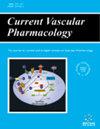Proposal of a Modified Classification of Hypertensive Crises: Urgency, Impending Emergency, and Emergency
IF 2.8
3区 医学
Q2 PERIPHERAL VASCULAR DISEASE
引用次数: 0
Abstract
: Systemic arterial hypertension (HTN) is the main cause of morbidity and mortality, and HTN crises contribute significantly to an unfavourable clinical course. For decades, HTN crises have been dichotomized into hypertensive emergency (HTN-E) and hypertensive urgency (HTN-U). The main difference between the two is the presence of acute hypertension-mediated organ damage (HMOD) – if HMOD is present, HTN crisis is HTN-E; if not, it is HTN-U. Patients with HTN-E are in a life-threatening situation. They are hospitalized and receive antihypertensive drugs intravenously (IV). On the other hand, patients with HTN-U are usually not hospitalized and receive their antihypertensives orally. We suggest a modification of the current risk stratification scheme for patients with HTN crises. The new category would be the intermediate risk group, more precisely the ‘impending HTN-E’ group, with a higher risk in comparison to HTN-U and a lower risk than HTN-E. ‘Impending HMOD’ means that HMOD has not occurred (yet), and the prognosis is, therefore, better than in patients with ongoing HMOD. There are three main reasons to classify patients as having impending HTN-E: excessively elevated BP, high-risk comorbidities, and ongoing bleeding/high bleeding risk. Their combinations are probable. This approach may enable us to prevent some HTNEs by avoiding acute HMOD using a timely blood pressure treatment. This treatment should be prompt but controlled.建议修改高血压危机分类:急诊、即将发生的紧急情况和紧急情况
:全身性动脉高血压(HTN)是发病和死亡的主要原因,高血压危象在很大程度上导致了不良的临床病程。几十年来,高血压危象一直被分为高血压急症(HTN-E)和高血压急症(HTN-U)。两者的主要区别在于是否存在急性高血压介导的器官损伤(HMOD)--如果存在 HMOD,高血压危象即为高血压急症(HTN-E);如果不存在 HMOD,则为高血压急症(HTN-U)。急性高血压危象患者的生命受到威胁。他们需要住院并接受静脉注射降压药物。另一方面,U 型高血压患者通常不住院,口服降压药。我们建议修改目前针对高血压危象患者的风险分层方案。新的类别将是中等风险组,更确切地说,是 "即将发生的高血压-E "组,其风险高于高血压-U 组,但低于高血压-E 组。即将发生的 HMOD "意味着 HMOD(尚未发生),因此预后比正在发生 HMOD 的患者要好。将患者归为 "即将发生的高血压-E "有三个主要原因:血压过度升高、高危合并症和正在出血/出血风险高。它们的组合是可能的。这种方法可使我们通过及时的血压治疗避免急性高血压并发症,从而预防一些高血压并发症。治疗应及时但有控制。
本文章由计算机程序翻译,如有差异,请以英文原文为准。
求助全文
约1分钟内获得全文
求助全文
来源期刊

Current vascular pharmacology
医学-外周血管病
CiteScore
9.20
自引率
4.40%
发文量
54
审稿时长
6-12 weeks
期刊介绍:
Current Vascular Pharmacology publishes clinical and research-based reviews/mini-reviews, original research articles, letters, debates, drug clinical trial studies and guest edited issues to update all those concerned with the treatment of vascular disease, bridging the gap between clinical practice and ongoing research.
Vascular disease is the commonest cause of death in Westernized countries and its incidence is on the increase in developing countries. It follows that considerable research is directed at establishing effective treatment for acute vascular events. Long-term treatment has also received considerable attention (e.g. for symptomatic relief). Furthermore, effective prevention, whether primary or secondary, is backed by the findings of several landmark trials. Vascular disease is a complex field with primary care physicians and nurse practitioners as well as several specialties involved. The latter include cardiology, vascular and cardio thoracic surgery, general medicine, radiology, clinical pharmacology and neurology (stroke units).
 求助内容:
求助内容: 应助结果提醒方式:
应助结果提醒方式:


